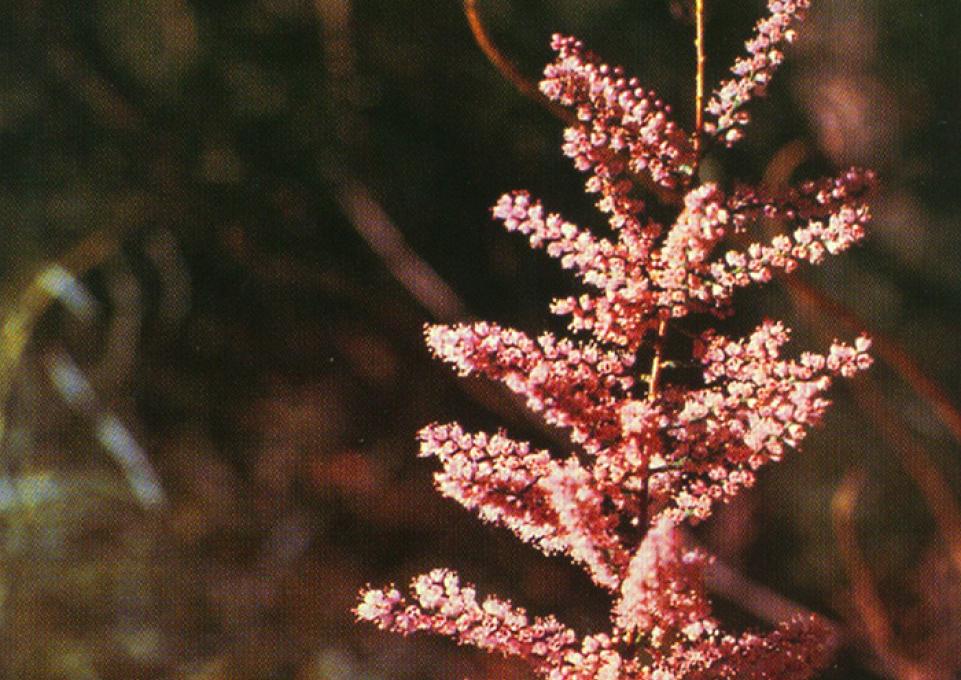
In 1998, after three decades of research, an insect was introduced to the American West in an effort to slow the spread of the invasive woody plant, Tamarix spp.
“Everybody expects to hear a disaster story when we say that,” said Daniel Potts, a plant physiological ecologist and associate professor of biology at Buffalo State. “But in fact, it’s been successful.” What makes the story interesting to Potts is that it’s been more successful in some populations of Tamarix than in others.
 Potts is one of the coauthors of “Can local adaptation explain varying patterns of herbivory tolerance in a recently introduced woody plant in North America?” published recently in Conservation Physiology.
Potts is one of the coauthors of “Can local adaptation explain varying patterns of herbivory tolerance in a recently introduced woody plant in North America?” published recently in Conservation Physiology.
Tamarix—known commonly as tamarisk or salt cedar—was introduced to the United States as an ornamental plant in the mid-1800s. It was deemed suitable for western gardens and erosion control because it thrives in riparian environments, and it can tolerate the dry, saline conditions common along western rivers. By 1930, it was perceived to be a threat to native ecosystems, but it resisted eradication by fire, mechanical removal, and herbicide.
Diorhabda carinulata, the northern tamarisk leaf beetle, feeds on the leaves of Tamarix. The researchers explored the hypothesis that Tamarix has evolved very rapidly in North America, and some populations have developed strategies to be more resilient in the face of D. carinulata’s attacks.
North America’s Tamarix is a hybridization of two species from Eurasia: T. ramosissima and T. chimensis. The article suggests that “there is building evidence that the hybridization of Tamarix may provide variation in traits that could promote local adaptation.” Tamarix in the northern range have a larger root-to-shoot ratio than the southern populations as well as a shorter growing season. Southern Tamarix grow larger above ground and produce leaves throughout the year.
As part of the study, a common garden containing Tamarix from various elevations and latitudes was cultivated at the University of Arizona Mesa Farm in Yuma. “I contributed to measuring physiological variation among Tamarix populations in the common garden,” said Potts. “The variability we measured is consistent with the evolution of Tamarix populations to reflect their respective environmental conditions.” Observations suggested that Tamarix from the northern range store more carbon in their roots than their southern relatives. The southern Tamarix grow quicker than the northern plants.
Fast growth may have been an advantage to the southern plants. “In the north, however, there may be a penalty for growing fast,” said Potts. “The plants must survive a longer winter and a shorter growing season. In any case, for reasons we don’t fully understand, it is more common for the northern plants to store carbon.”
However, add the leaf beetle to the mix, and the rules of the game change. Once the beetles feed on the plants’ leaves—an event that may occur repeatedly in a growing season—Tamarix from the southern region may lack the carbon resources necessary to continue to promote the leaf growth upon which the plant depends. The northern plants may have enough stored carbon to replace the leaves, especially given the shorter growing season that reduces vulnerability to the beetle’s herbivory.
The interactions among plants from different populations, the multiple stressors in Western riparian ecosystems, and the introduction of the leaf beetle present a complex model. “It’s hard to tease apart the differences between the northern and southern Tamarix populations,” said Potts. “So we grew them together in a common garden where they shared the same variables of water, sunlight, temperature, and so on. The differences remain, which suggests a genetic component.”
About Dan Potts
Dan Potts grew up in Montana and earned his Ph.D. in ecology and evolutionary biology at the University of Arizona. His research focuses on plants’ response to, and effect on, the environment, with a particular focus on plants in semi-arid areas, including Tamarix in China. He is the incoming chair of the Southwest Chapter of the Ecological Society of America.
Photo: Mr. and Mrs. Robert G. Young, hosted by the USDA-NRCS PLANTS Database / USDA NRCS. 1992. Western wetland flora: Field office guide to plant species. West Region, Sacramento.
